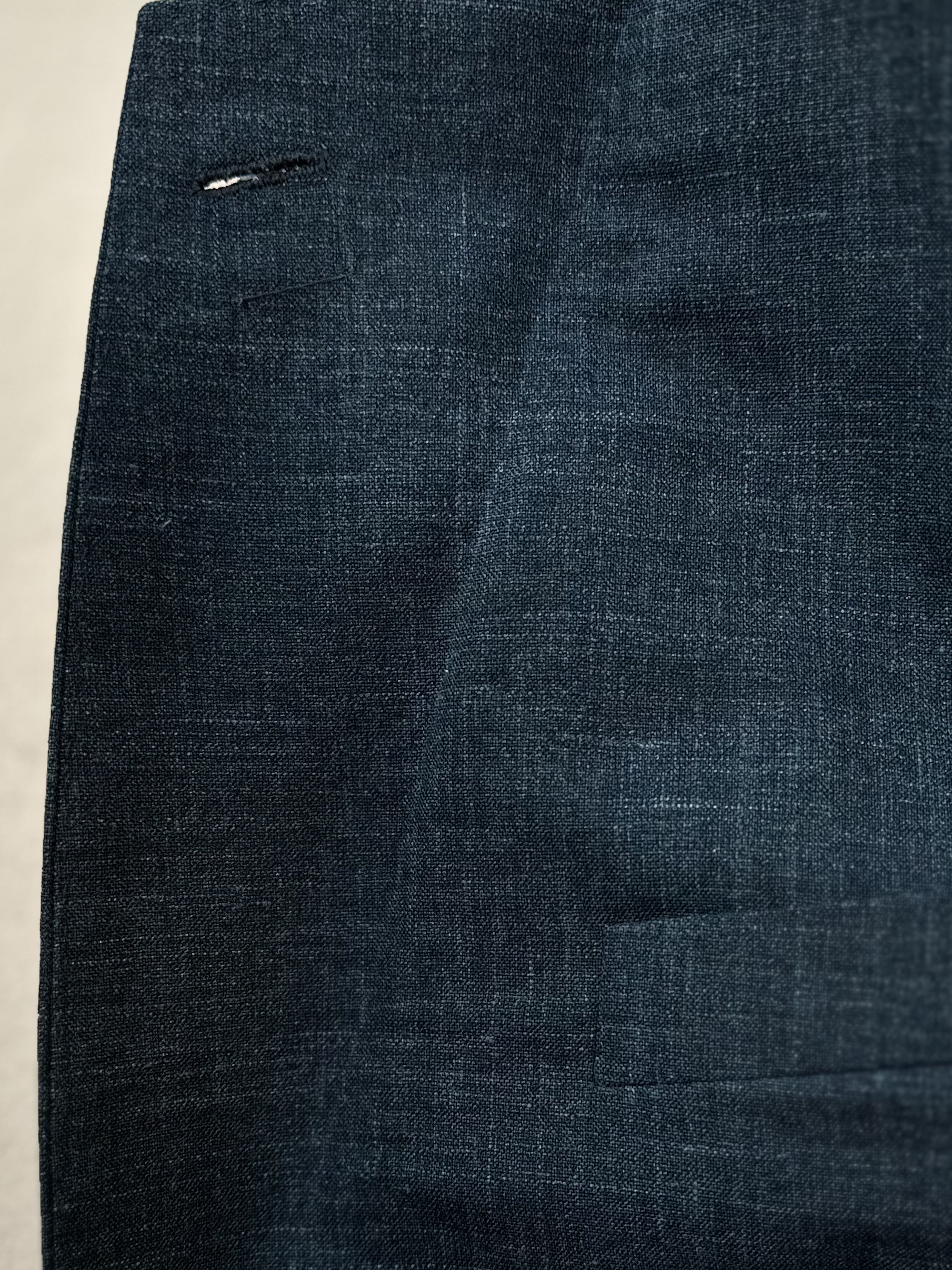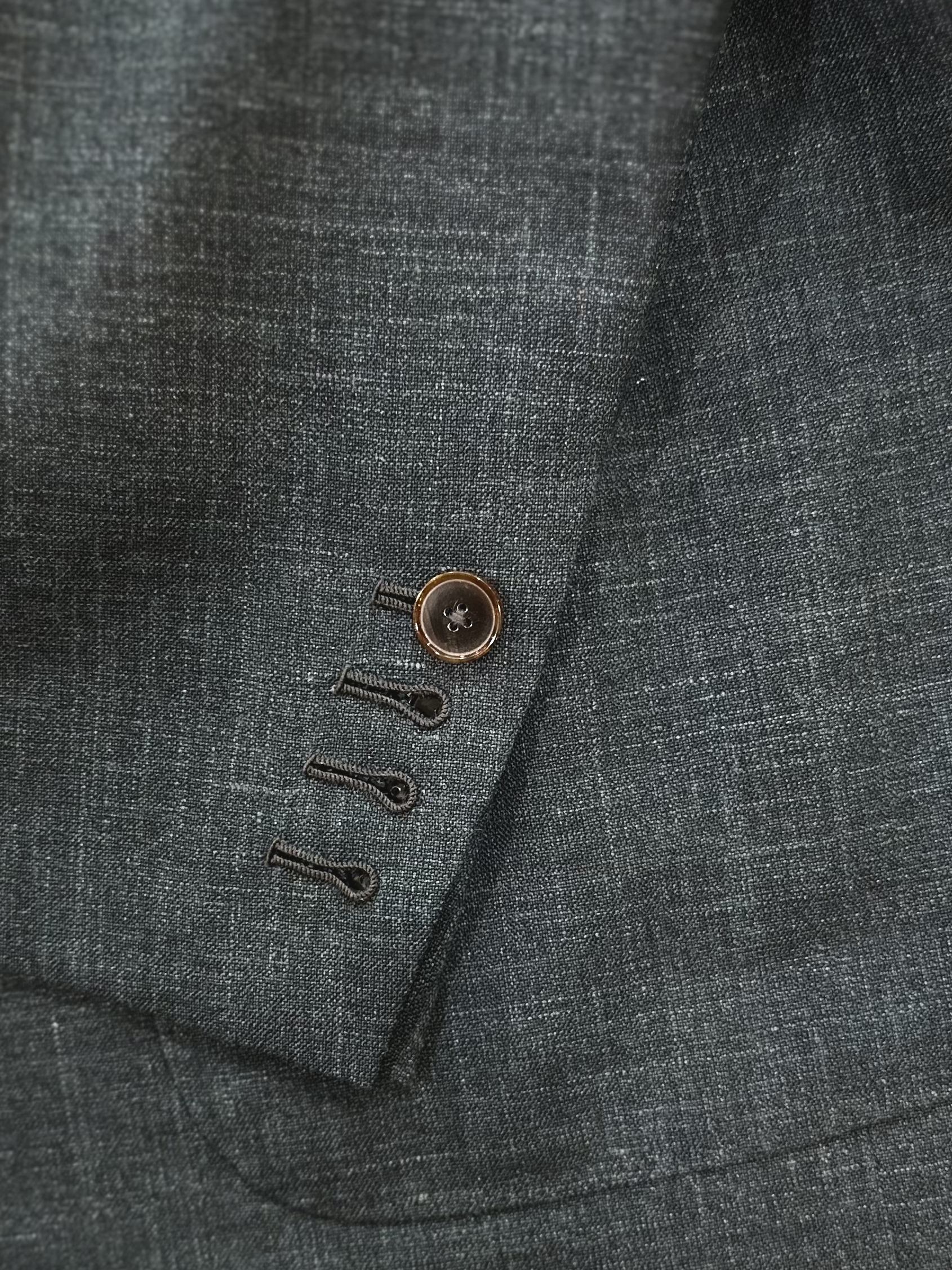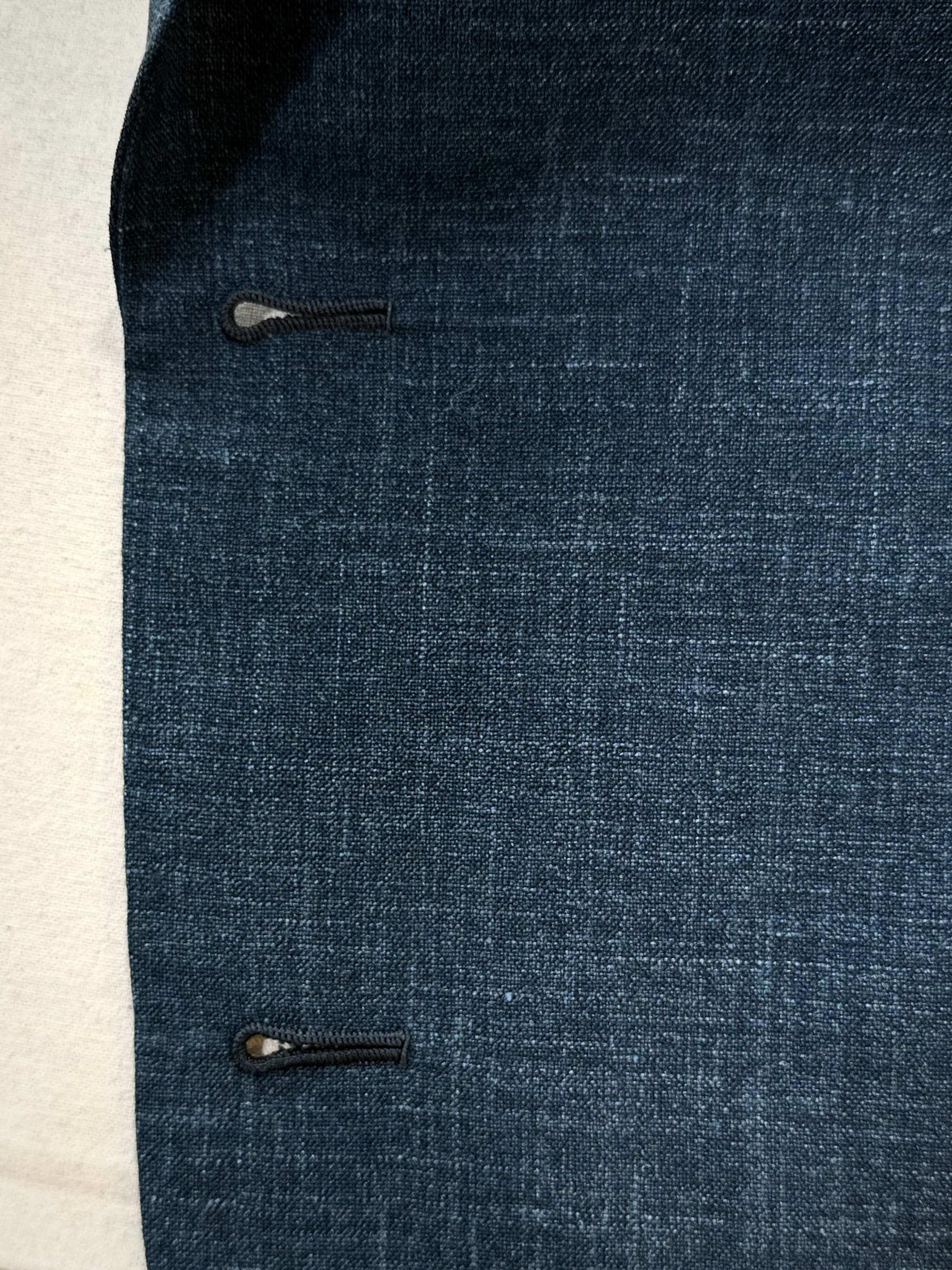Some Thoughts on Hand Finishing
Today’s market is flooded with different types of garments. At the same time, we are bombarded with a sheer load of information about how garments are made. It is a generally accepted notion that fine garments are handmade. (There are a lot of hand-sewing process as well as machine stitching to be honest.) With the help of AI Chatbot, everyone can find numerous reasons for sticking to hand stitching. Reflection on part of our tailoring process is a re-evaluation. Our experience is not a scientific research but we wish to share some interesting stories behind.
Bespoke tailoring is renowned for its hand stitching involved. We roughly estimate 80% of the tailoring process is dedicated to hand sewing. Looking at some of our previous work renders us ponder the contemplation underwent.
Hand padded lapel is one of the iconic features of bespoke tailoring. Pad stitching creates a natural lapel roll. (There are advanced machines replicating the process. We yet do not know if the outcome is better. Nevertheless, we are far away from investing one even this could achieve satisfactory result.) Depending on the fabric, sometimes the stitches are not noticeable on the underside of the lapel. Our style is to make it as invisible as possible. It may not be a widely accepted approach but we consider this as a pursuance of fine craftsmanship. Some tailoring books or forums discussed about using silk thread for padding. Our experience is not evident to opt for silk thread in the process. Silk thread is more decorative in nature and does not have the physical strength of polyester thread. We argued that polyester thread may melt. It did happen but rare. Given the thermal shrinkage of modern polyester thread can be as high as 160°C, it is unsure silk thread is a better option in padding.
Handmade buttonholes are probably the most discussed hand finishing in bespoke tailoring. Decades ago localised sourcing was common, many buttonholes were sewn using six strands of thread. We guess every tailor would find the result undesirable. But in the old days, everyone just used whatever was available. The convenience of today’s global sourcing brings us specialised silk thread manufactured for sewing buttonhole easily. It takes around three to four months of practice for an apprentice to be ready to sew a buttonhole. It’s difficult for each buttonhole to be identical but this is the irreplaceable human touch that makes the aesthetic difference. To hold the shape of the buttonhole there is a special thread called gimp. Unfortunately, gimps are not available in many colours. Our solution is using the same silk thread to twist a two-strand gimp as replacement.
Usually, we use a very thin silk thread from Japan to do prick stitching at the edge of the jacket. It is our style to conceal the stitching as much as possible. Sometimes we do use a thick silk thread for visual effect on fabrics with texture. Some tailors will do the prick stitching of the very edge of the jacket. Some will prefer slightly inwards from edge so the stitches can go through all layers of fabrics including the canvas and taping. Both have their merits but it is more important that the thread is not too tight to prevent puckering.
Hand felling the lining is the standard way of finishing inside the jacket. Lining is a very soft fabric and hand sewing can provide high precision. The result is a neater, less visible finish and a natural drape. Some tailors will use prick stitching on some edges. It is of course a stronger construction but we prefer the appearance of slip stitching.
There are various ways to make the inside pocket. It is also a major part that a tailor can demonstrate their design. Our approach is the traditional construction with hand sewing finish at the end of piping as enforcement. We usually construct the inside pockets with flaps for the safe keeping of personal belongings.




